-
 Bitcoin
Bitcoin $116900
0.00% -
 Ethereum
Ethereum $4280
5.48% -
 XRP
XRP $3.265
-1.45% -
 Tether USDt
Tether USDt $1.000
-0.01% -
 BNB
BNB $807.0
1.41% -
 Solana
Solana $183.1
2.93% -
 USDC
USDC $0.9999
0.00% -
 Dogecoin
Dogecoin $0.2440
6.50% -
 TRON
TRON $0.3357
-0.88% -
 Cardano
Cardano $0.8178
2.63% -
 Hyperliquid
Hyperliquid $44.13
7.45% -
 Chainlink
Chainlink $21.39
9.09% -
 Stellar
Stellar $0.4524
-0.84% -
 Sui
Sui $3.957
2.13% -
 Bitcoin Cash
Bitcoin Cash $572.7
-2.54% -
 Hedera
Hedera $0.2671
1.54% -
 Avalanche
Avalanche $24.77
4.17% -
 Ethena USDe
Ethena USDe $1.001
0.02% -
 Litecoin
Litecoin $122.3
-1.94% -
 Toncoin
Toncoin $3.432
2.26% -
 UNUS SED LEO
UNUS SED LEO $9.007
0.49% -
 Shiba Inu
Shiba Inu $0.00001396
5.26% -
 Uniswap
Uniswap $11.09
1.64% -
 Polkadot
Polkadot $4.155
4.57% -
 Dai
Dai $1.000
0.00% -
 Pepe
Pepe $0.00001253
5.11% -
 Cronos
Cronos $0.1588
2.67% -
 Bitget Token
Bitget Token $4.512
0.05% -
 Monero
Monero $275.0
0.64% -
 Ethena
Ethena $0.7527
15.10%
What is the Lightning Network for Bitcoin?
The Lightning Network enables fast, low-cost Bitcoin transactions off-chain through payment channels, scaling Bitcoin’s capacity while maintaining its security.
Aug 10, 2025 at 08:50 am
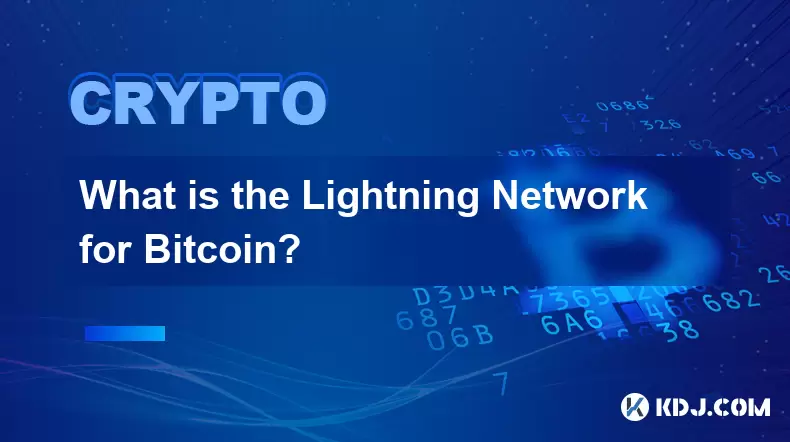
Understanding the Lightning Network: A Scalability Solution for Bitcoin
The Lightning Network is a second-layer payment protocol built on top of the Bitcoin blockchain. It was designed to address one of Bitcoin’s most pressing challenges: transaction speed and scalability. While Bitcoin is secure and decentralized, its base layer can only process around 7 transactions per second, leading to network congestion and high fees during peak usage. The Lightning Network enables instant, low-cost transactions by moving most payments off-chain, while still leveraging Bitcoin’s underlying security.
Instead of broadcasting every transaction to the entire network, the Lightning Network allows users to open payment channels between each other. These channels permit numerous transactions to occur instantly and privately, with only the opening and closing of the channel recorded on the Bitcoin blockchain. This drastically reduces the load on the main chain and makes microtransactions feasible.
How Payment Channels Work on the Lightning Network
Payment channels are the foundation of the Lightning Network. To use one, two parties must first lock up a certain amount of bitcoin into a multi-signature wallet. This process is recorded on the Bitcoin blockchain and establishes the channel.
Once the channel is open, both participants can send funds back and forth as many times as they want. These transactions are signed cryptographically but not broadcast to the blockchain. Each update to the balance reflects the latest agreed-upon state between the two parties.
- Both parties must sign every new balance update using their private keys.
- The most recent signed state is considered valid, ensuring that only the latest transaction can be settled on-chain.
- Either party can unilaterally close the channel at any time by submitting the latest state to the blockchain.
If one party attempts to broadcast an outdated state, the other has a defined time window to challenge it by presenting a more recent signed transaction, which results in the malicious party losing funds as a penalty.
Routing Payments Across the Network
The true power of the Lightning Network emerges when payments are routed through interconnected channels. Users don’t need a direct channel with the recipient to send funds. Instead, the network uses multi-hop routing to find a path from sender to receiver through intermediaries.
Each node along the route earns a small routing fee, incentivizing participation in the network. These fees are typically fractions of a cent, making them negligible compared to on-chain fees.
- Payments are secured using Hash Time-Locked Contracts (HTLCs).
- The recipient generates a secret value and shares its hash with the sender.
- Each intermediary in the route agrees to forward the payment only if they receive the preimage (the original secret) from the next hop.
- This ensures that the payment either completes end-to-end or fails entirely, preventing partial settlements.
Routing is automated by the Lightning software, which evaluates available paths based on channel capacity, fees, and reliability.
Setting Up a Lightning Node: A Step-by-Step Guide
Running your own Lightning node gives you full control over your transactions and allows you to earn routing fees. Here’s how to set one up:
- Choose compatible software such as LND (Lightning Network Daemon), c-lightning, or Eclair.
- Install a full Bitcoin node first, as Lightning requires access to the complete blockchain for validation.
- Download and configure your chosen Lightning implementation, ensuring it connects to your Bitcoin node via RPC.
- Generate a wallet within the Lightning software and fund it by opening channels.
- Use command-line tools or a web interface (like RTL or ThunderHub) to manage channels and monitor activity.
Opening your first channel requires selecting a reliable peer and deciding how much bitcoin to commit. You can find public nodes on directories like 1ml.com to connect with.
Using Lightning Wallets for Everyday Transactions
Most users interact with the Lightning Network through user-friendly wallets rather than running a full node. These wallets abstract away technical complexity and provide seamless payment experiences.
Popular Lightning wallets include Phoenix, Muun, Wallet of Satoshi, and BlueWallet. They often use custodial or semi-custodial models, where the provider manages the node infrastructure on your behalf.
To send a payment:
- Scan a Lightning invoice (a QR code or text string starting with “lnbc”).
- Confirm the amount and network fee.
- The wallet automatically finds a route and completes the transaction in seconds.
Receiving payments is just as simple. The wallet generates an invoice that others can pay. Invoices can be set to expire and are typically used for one-time payments.
Some wallets also support keysend, a feature that allows sending payments without requiring an invoice, enabling spontaneous transfers similar to cash.
Security and Trade-Offs of the Lightning Network
While the Lightning Network offers speed and low cost, it introduces new security considerations. Funds locked in channels are not immediately accessible unless the channel is closed. If a node goes offline, the counterparty might attempt to broadcast an old state, though the system allows for penalty mechanisms to protect honest users.
Channel imbalance is another issue. If one side of a channel sends more than it receives, its balance depletes, making it unable to send further payments until rebalanced. Techniques like splicing and circular rebalancing help mitigate this.
Additionally, privacy on Lightning is different from on-chain transactions. While individual payments aren’t public, routing nodes may infer information about payment paths. Some implementations use source-based routing or privacy-preserving protocols to minimize metadata leakage.
Frequently Asked Questions
Can I recover my funds if my Lightning node goes offline?
Yes. If your node goes offline and your channel partner attempts to close the channel using an outdated balance, you have a challenge period (defined in the channel setup) to come back online and submit the correct, more recent state. If you do so, the network penalizes the dishonest party by taking their funds. However, if you remain offline past this window, you risk losing funds. Using watchtowers—third-party services that monitor channels on your behalf—can help protect against this.
Are Lightning Network transactions reversible?
No. Once a payment is completed and settled across the network, it cannot be reversed. This is by design, as Lightning inherits Bitcoin’s principle of finality. Unlike traditional payment systems, there is no chargeback mechanism. Users must ensure they are sending funds to the correct recipient.
What happens if a routing node goes offline during a payment?
If an intermediate node is offline, the payment will fail to route through that path. The sender’s wallet will either attempt an alternative route or return an error. HTLCs include time limits, so if a node doesn’t respond in time, the funds are automatically returned to the sender. This prevents money from being stuck indefinitely.
Do I need to keep my Lightning wallet open to receive payments?
It depends on the wallet type. Non-custodial wallets that run your own node require the node to be online to receive incoming payments. However, many mobile wallets use watchtowers or always-on backends to accept payments even when your device is off. Custodial wallets handle this entirely on their infrastructure, so availability is not a concern for the end user.
Disclaimer:info@kdj.com
The information provided is not trading advice. kdj.com does not assume any responsibility for any investments made based on the information provided in this article. Cryptocurrencies are highly volatile and it is highly recommended that you invest with caution after thorough research!
If you believe that the content used on this website infringes your copyright, please contact us immediately (info@kdj.com) and we will delete it promptly.
- Meme Coins in 2025: Early Access to the Moon with $MOBU
- 2025-08-10 12:30:11
- Bitcoin's Golden Cross: Rally Outlook and What's Next
- 2025-08-10 12:30:11
- XRP Price, Remittix, and Ripple Rivals: A Crypto Cocktail
- 2025-08-10 10:50:16
- Live Crypto Updates, August 10: ETH Soars, Trump's Crypto Play, and More!
- 2025-08-10 11:30:16
- Riding the Wave: Ethereum, DeFi, and the Liquid Staking Derivatives (LSDs) Surge
- 2025-08-10 10:30:15
- Strobe Ventures, ENA Tokens, and the Surge: What's the Deal?
- 2025-08-10 10:35:15
Related knowledge
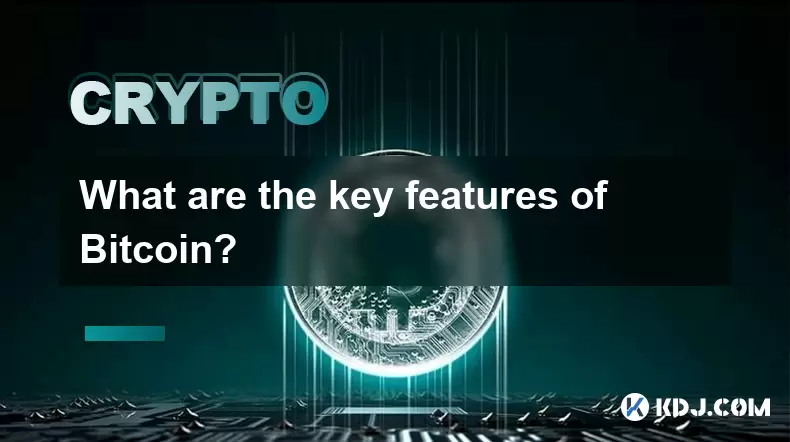
What are the key features of Bitcoin?
Aug 10,2025 at 02:50am
Decentralization and Peer-to-Peer NetworkOne of the most defining characteristics of Bitcoin is its decentralized nature. Unlike traditional financial...

Can the Bitcoin protocol be changed?
Aug 07,2025 at 01:16pm
Understanding the Bitcoin ProtocolThe Bitcoin protocol is the foundational set of rules that govern how the Bitcoin network operates. It defines every...
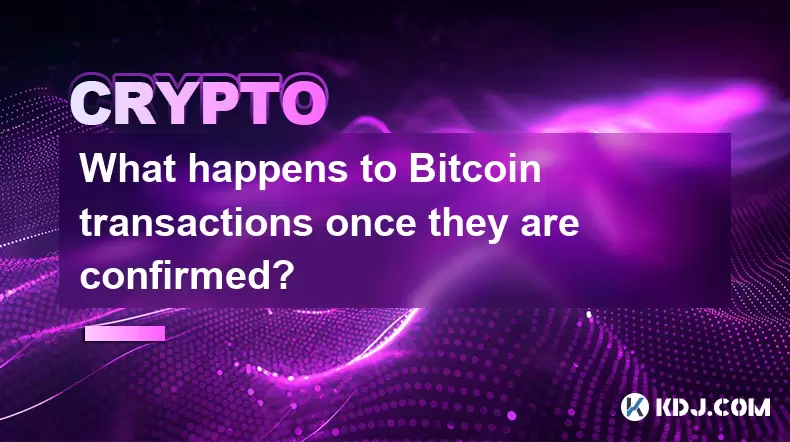
What happens to Bitcoin transactions once they are confirmed?
Aug 09,2025 at 05:22am
Understanding Bitcoin Transaction ConfirmationWhen a Bitcoin transaction is initiated, it is broadcast to the network and placed in a pool of unconfir...
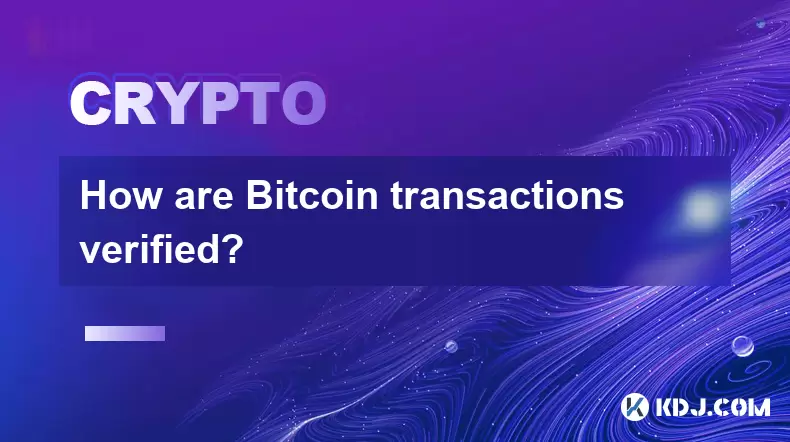
How are Bitcoin transactions verified?
Aug 08,2025 at 06:57am
Understanding Bitcoin Transaction VerificationBitcoin transactions are verified through a decentralized network of nodes and miners that ensure the le...

How does decentralization make Bitcoin secure?
Aug 08,2025 at 09:35am
Understanding Decentralization in BitcoinDecentralization is a foundational principle of Bitcoin's architecture and plays a critical role in its secur...
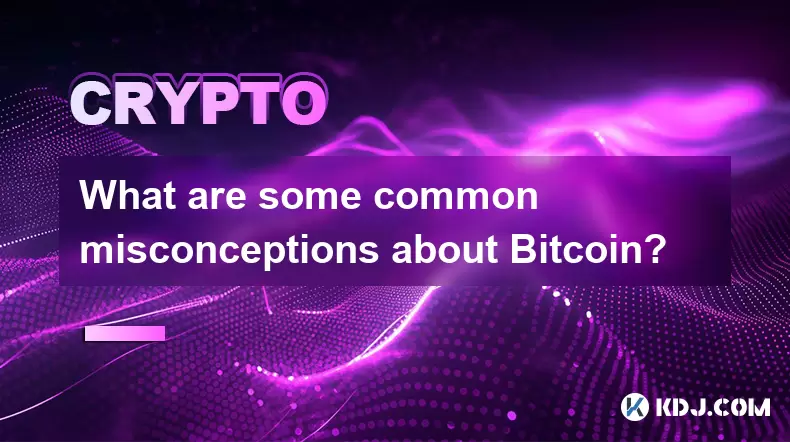
What are some common misconceptions about Bitcoin?
Aug 07,2025 at 07:22pm
Bitcoin is Just Like Regular MoneyA widespread misconception is that Bitcoin functions identically to traditional fiat currencies like the US dollar o...

What are the key features of Bitcoin?
Aug 10,2025 at 02:50am
Decentralization and Peer-to-Peer NetworkOne of the most defining characteristics of Bitcoin is its decentralized nature. Unlike traditional financial...

Can the Bitcoin protocol be changed?
Aug 07,2025 at 01:16pm
Understanding the Bitcoin ProtocolThe Bitcoin protocol is the foundational set of rules that govern how the Bitcoin network operates. It defines every...

What happens to Bitcoin transactions once they are confirmed?
Aug 09,2025 at 05:22am
Understanding Bitcoin Transaction ConfirmationWhen a Bitcoin transaction is initiated, it is broadcast to the network and placed in a pool of unconfir...

How are Bitcoin transactions verified?
Aug 08,2025 at 06:57am
Understanding Bitcoin Transaction VerificationBitcoin transactions are verified through a decentralized network of nodes and miners that ensure the le...

How does decentralization make Bitcoin secure?
Aug 08,2025 at 09:35am
Understanding Decentralization in BitcoinDecentralization is a foundational principle of Bitcoin's architecture and plays a critical role in its secur...

What are some common misconceptions about Bitcoin?
Aug 07,2025 at 07:22pm
Bitcoin is Just Like Regular MoneyA widespread misconception is that Bitcoin functions identically to traditional fiat currencies like the US dollar o...
See all articles

























































































